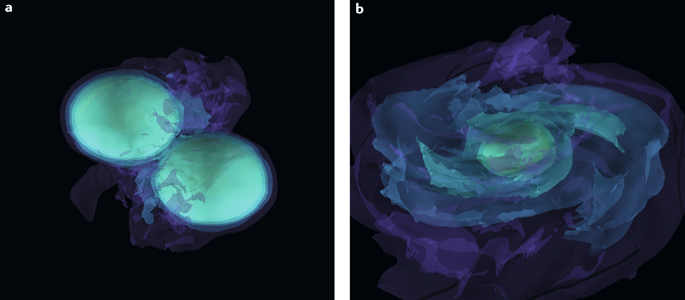Nature Reviews Physics ( IF 44.8 ) Pub Date : 2019-10-03 , DOI: 10.1038/s42254-019-0097-4 E. A. Huerta , Gabrielle Allen , Igor Andreoni , Javier M. Antelis , Etienne Bachelet , G. Bruce Berriman , Federica B. Bianco , Rahul Biswas , Matias Carrasco Kind , Kyle Chard , Minsik Cho , Philip S. Cowperthwaite , Zachariah B. Etienne , Maya Fishbach , Francisco Forster , Daniel George , Tom Gibbs , Matthew Graham , William Gropp , Robert Gruendl , Anushri Gupta , Roland Haas , Sarah Habib , Elise Jennings , Margaret W. G. Johnson , Erik Katsavounidis , Daniel S. Katz , Asad Khan , Volodymyr Kindratenko , William T. C. Kramer , Xin Liu , Ashish Mahabal , Zsuzsa Marka , Kenton McHenry , J. M. Miller , Claudia Moreno , M. S. Neubauer , Steve Oberlin , Alexander R. Olivas , Donald Petravick , Adam Rebei , Shawn Rosofsky , Milton Ruiz , Aaron Saxton , Bernard F. Schutz , Alex Schwing , Ed Seidel , Stuart L. Shapiro , Hongyu Shen , Yue Shen , Leo P. Singer , Brigitta M. Sipocz , Lunan Sun , John Towns , Antonios Tsokaros , Wei Wei , Jack Wells , Timothy J. Williams , Jinjun Xiong , Zhizhen Zhao

|
Multi-messenger astrophysics is a fast-growing, interdisciplinary field that combines data, which vary in volume and speed of data processing, from many different instruments that probe the Universe using different cosmic messengers: electromagnetic waves, cosmic rays, gravitational waves and neutrinos. In this Expert Recommendation, we review the key challenges of real-time observations of gravitational wave sources and their electromagnetic and astroparticle counterparts, and make a number of recommendations to maximize their potential for scientific discovery. These recommendations refer to the design of scalable and computationally efficient machine learning algorithms; the cyber-infrastructure to numerically simulate astrophysical sources, and to process and interpret multi-messenger astrophysics data; the management of gravitational wave detections to trigger real-time alerts for electromagnetic and astroparticle follow-ups; a vision to harness future developments of machine learning and cyber-infrastructure resources to cope with the big-data requirements; and the need to build a community of experts to realize the goals of multi-messenger astrophysics.
中文翻译:

通过深度学习实现实时的多信使天体物理学发现
多信使天体物理学是一个快速发展的跨学科领域,它结合了数据,数据的数量和速度各不相同,这些数据来自使用不同的宇宙信使探测宇宙的许多不同仪器:电磁波,宇宙射线,引力波和中微子。在本专家建议中,我们回顾了对重力波源及其电磁和天体粒子实时观测的主要挑战,并提出了许多建议,以最大程度地发挥其在科学发现中的潜力。这些建议涉及可扩展且计算效率高的机器学习算法的设计。网络基础设施,以数字方式模拟天体物理源,并处理和解释多信使天体物理学数据;管理重力波检测,以触发电磁和天体粒子跟踪的实时警报;利用机器学习和网络基础设施资源的未来发展来满足大数据需求的愿景;还需要建立一个专家社区,以实现多信使天体物理学的目标。











































 京公网安备 11010802027423号
京公网安备 11010802027423号